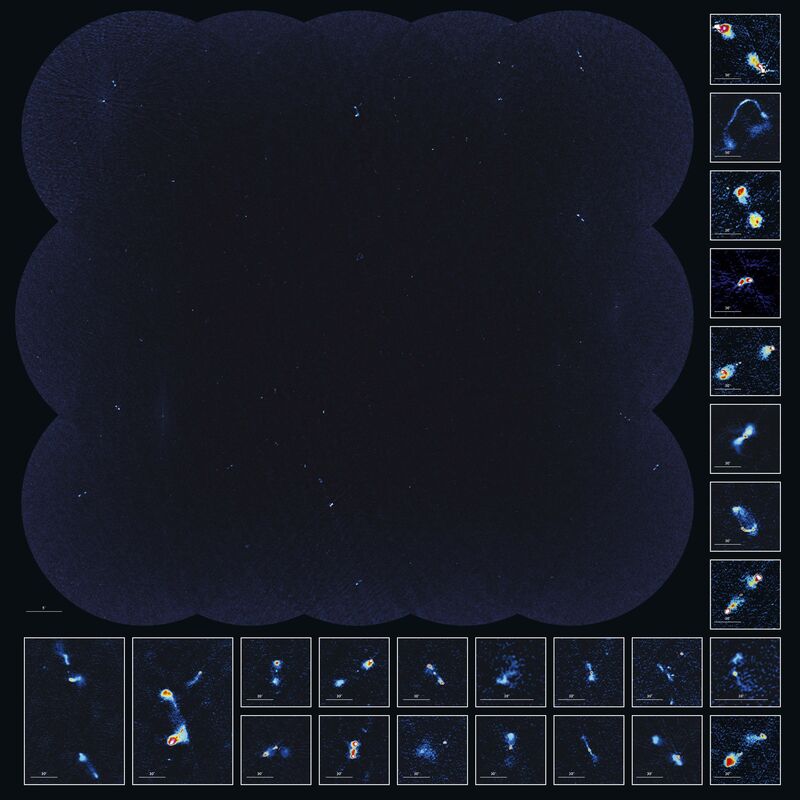VLA-COSMOS Survey
Description
The Cosmic Evolution Survey (COSMOS) is a pan-chromatics (X-ray to mm) observational project to perform a detailed study of galaxy and super-massive black hole evolution through cosmic times, with particular emphasis on the influence of environment and large scale structure. This VLA Large Project is the largest radio deep field at this depth and angular resolution. It provides about 3500 compact and extended radio surces allowing the study of the dust-obscured star formation history of galaxies and the evolution of active galactic nuclei through cosmic history. The insets to the right and the bottom show radio galaxies that have been detected in the 1.4 by 1.4 degree image.
At radio wavelengths, the VLA-COSMOS Survey uses NRAO's Very Large Array (VLA) to conduct state-of-the-art (~ 1.5" resolution), deep (1sigma ~ 10 microJy), wide-field imaging at 1.4 GHz continuum of the COSMOS 2 square degree deep field. A total of 250 hr in A array and 25hr in C array was spent to observe the 23 pointing which are required to cover the COSMOS field.
Creator
Legacy Astronomical Images
Rights
NRAO/AUI/NSF does not hold full copyright for this image. Contact the archivist for details.
Type
Legacy Astronomical Image
Object Name
COSMOS field
Photo Credit
Schinnerer & Quetz (MPIA)
Investigators
Schinnerer, Smolcic, Carilli, Bondi, Ciliegi, Scoville
Telescope
Very Large Array (VLA)
Type of Observation
continuum
Center of Image
RA 10:0:28.600, Dec: 1:0:0.000 (J2000)
Field of View
1.400000 x 1.400000 degrees
Notes
Contact the archivist for a high resolution tif of this image.
Series
Galaxies Series
Unit
Clusters Unit
Citation
Legacy Astronomical Images, “VLA-COSMOS Survey,” NRAO/AUI Archives, accessed April 1, 2025, https://www.nrao.edu/archives/items/show/33535.

